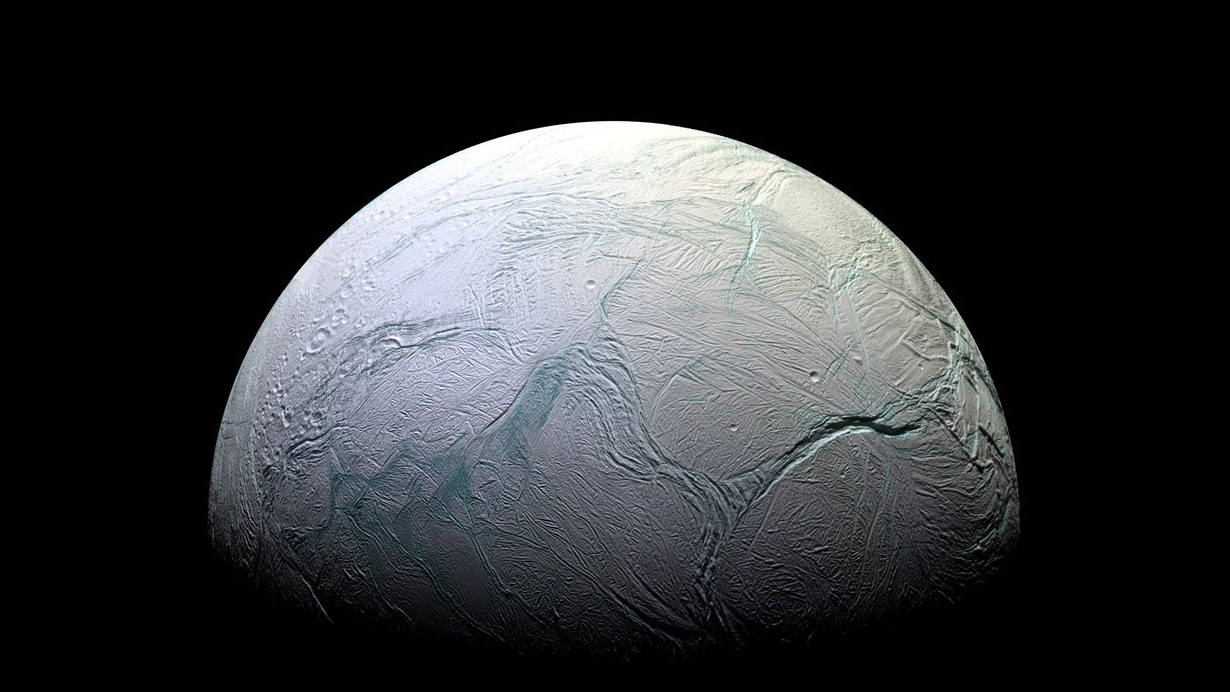Privately Funded Team May Launch Life-Hunting Mission to Saturn Moon Enceladus

SEATTLE — A privately funded team may beat NASA to the punch when it comes to looking for life on the Saturn moon Enceladus.
Breakthrough Initiatives — a program founded by billionaire tech investor Yuri Milner to hunt for alien life and help explore the cosmos — is considering launching a mission that would fly through the plume of water vapor and other material emanating from Enceladus' south polar region, Milner said here yesterday (Nov. 9) at The Economist magazine's inaugural global space summit, called "A New Space Age."
NASA's Saturn-orbiting Cassini spacecraft discovered the plume, and the 100-odd geysers that create it, in 2005. Subsequent observations by the probe revealed that these geysers are blasting stuff out from a potentially habitable ocean of salty liquid water that sloshes beneath the 313-mile-wide (504 kilometers) moon's icy shell. [Photos of Enceladus, Saturn's Geyser-Blasting Moon]
The plume provides a way to sample this ocean without even touching down on Enceladus. Cassini flew through the plume repeatedly during its epic Saturn mission, which ended with a fiery plunge in September, but the probe was not outfitted with life-detection gear. So astrobiologists have been clamoring to go back.
Milner — who already funds the $100 million intelligent-alien hunt Breakthrough Listen as well as Breakthrough Starshot, a $100 million interstellar-flight project — shares their enthusiasm.
"We formed a sort of little workshop around this idea: Can we design a low-cost, privately funded mission to Enceladus which can be launched relatively soon and that can look more thoroughly at those plumes and try to see what's going there ahead of a more expensive mission that NASA is considering right now, which might take maybe 10 years to launch?" Milner said.
That possible NASA mission would be an effort under the agency's New Frontiers program with a cost cap of approximately $1 billion. Two of the 12 candidates the space agency is mulling for the next New Frontiers project, which will launch in the mid-2020s, are Enceladus-focused.
Get the Space.com Newsletter
Breaking space news, the latest updates on rocket launches, skywatching events and more!
NASA is expected to pare this list down to a few finalists by the end of the year and announce the selected mission in 2019.
Milner didn't provide further details about the possible Breakthrough Initiatives Enceladus mission, such as its projected cost or timeline. He said the organization is taking a broad look to assess the various options.
"How can we, for the first time ever, design and send — launch, actually — a privately funded interplanetary science mission?" Milner said. "That's what we're thinking about."
Follow Mike Wall on Twitter @michaeldwall and Google+. Follow us @Spacedotcom, Facebook or Google+. Originally published on Space.com.
Join our Space Forums to keep talking space on the latest missions, night sky and more! And if you have a news tip, correction or comment, let us know at: community@space.com.

Michael Wall is a Senior Space Writer with Space.com and joined the team in 2010. He primarily covers exoplanets, spaceflight and military space, but has been known to dabble in the space art beat. His book about the search for alien life, "Out There," was published on Nov. 13, 2018. Before becoming a science writer, Michael worked as a herpetologist and wildlife biologist. He has a Ph.D. in evolutionary biology from the University of Sydney, Australia, a bachelor's degree from the University of Arizona, and a graduate certificate in science writing from the University of California, Santa Cruz. To find out what his latest project is, you can follow Michael on Twitter.









